On Father’s Day morning we had some very unsettled weather move through our area which brought with it some extremely strong winds. I couldn’t help but grab my camera and go out for a birds-in-flight practice session as I knew the very high winds would create ideal conditions for me. So, I headed out to Eastport Drive by Hamilton Harbour with my Nikon 1 V3 and 1 Nikon CX 70-300mm f/4.5-5.6 VR zoom lens to capture some practice images of birds-in-flight.
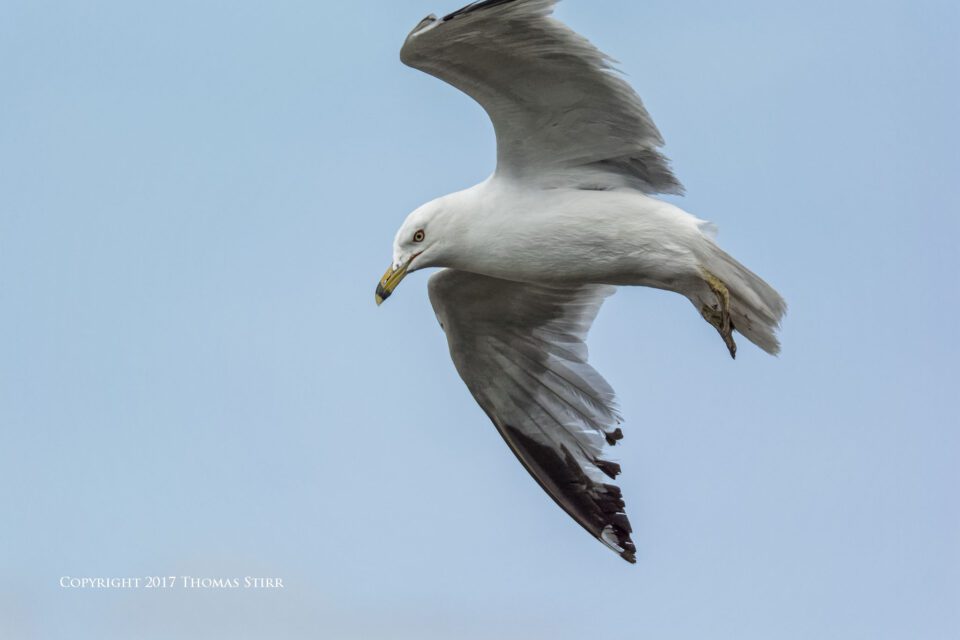
From early spring through to late June there is usually an abundance of cormorants and gulls nesting adjacent to Eastport Drive. I knew from previous experience that visiting in the morning would put the sun at my back, and the very strong winds would tend to consolidate the flight paths of the birds. This creates ideal conditions for one of my favourite birds-in-flight practice exercises that I call: Find – Frame – Fire! (i.e. find the BIF in your viewfinder, frame your image, fire the shutter).
The Number One Rule of my ‘Find – Frame – Fire’ exercise is that one cannot stop shooting for more than one minute. The goal is to keep continually photographing birds-in-flight.
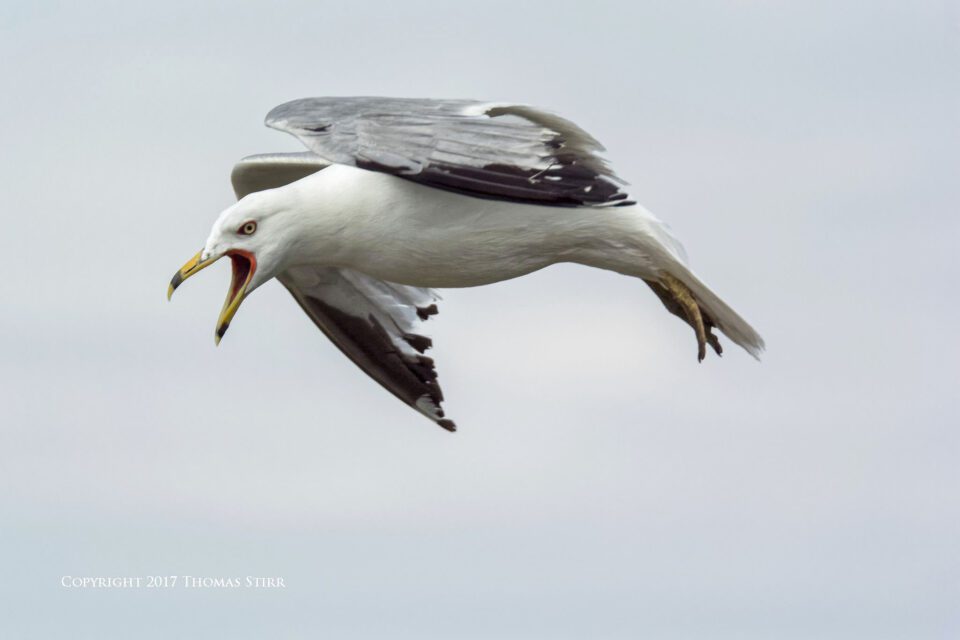
I always start this exercise with an empty 32GB memory card and a fresh battery in my Nikon 1 V3. During this specific exercise I always shoot single frames only, capturing as many images as I can until I either fill up my card, or run my battery down to depletion. I started doing this practice exercise back in my DSLR days, when filling a 16GB or 32GB card signaled the end of the exercise.
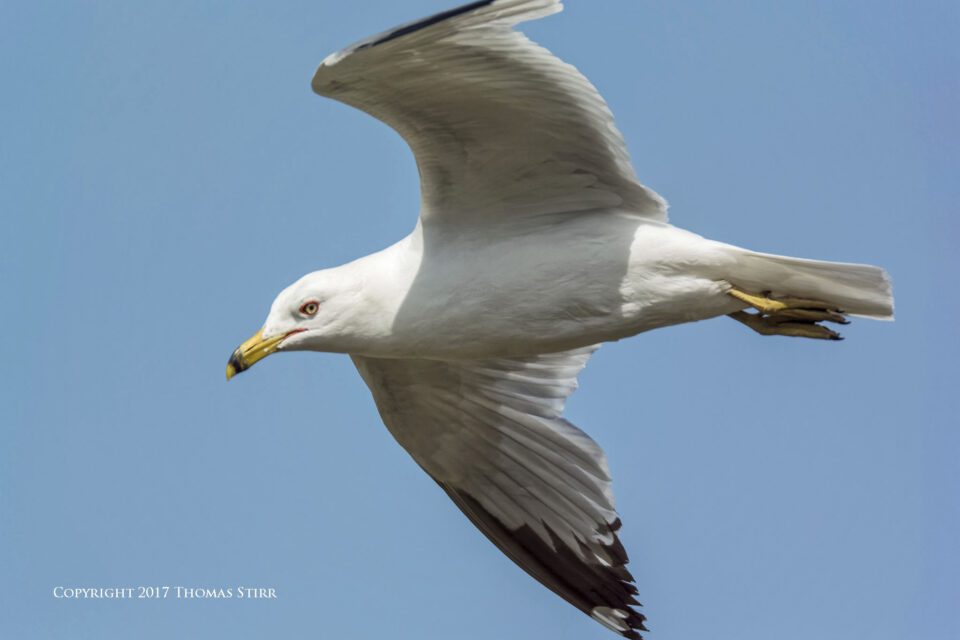
By checking the EXIF data on my images I was able to calculate that I captured a total of 451 single frames during the 61 minutes that it took me to run my V3’s battery down to depletion, or an average of 7.4 single image captures per minute. Again, no AF-C fast frames per second runs were used…only individual, single image captures.
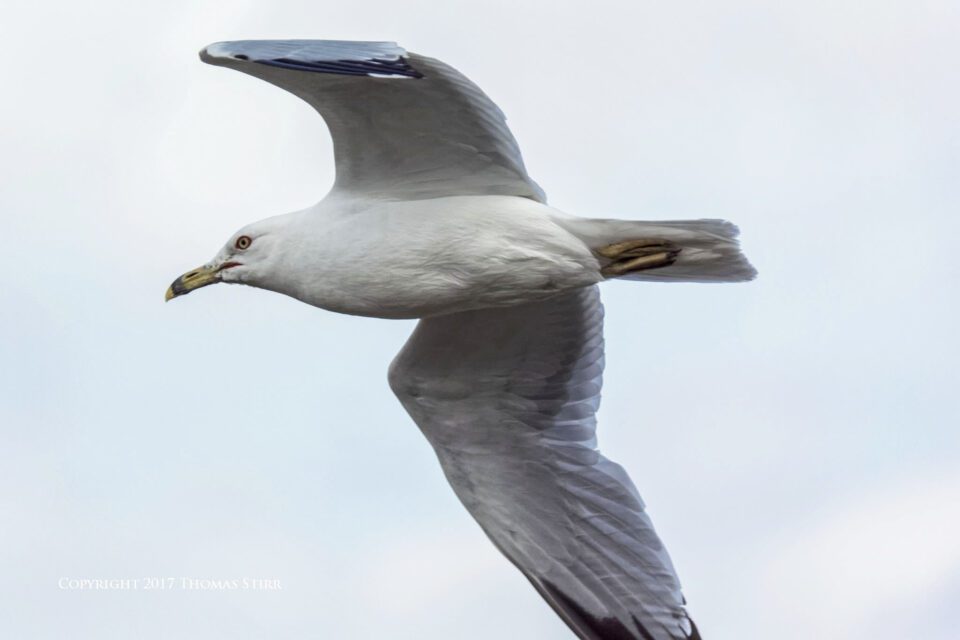
I like challenging myself with this exercise for a number of reasons. The first is that it forces me to use my lateral vision to quickly spot birds-in-flight and select target subjects very rapidly. Secondly, it helps to build eye-hand coordination. The third benefit is that it helps to train me to frame each image quickly, before pressing the shutter and moving on to the next photo opportunity.
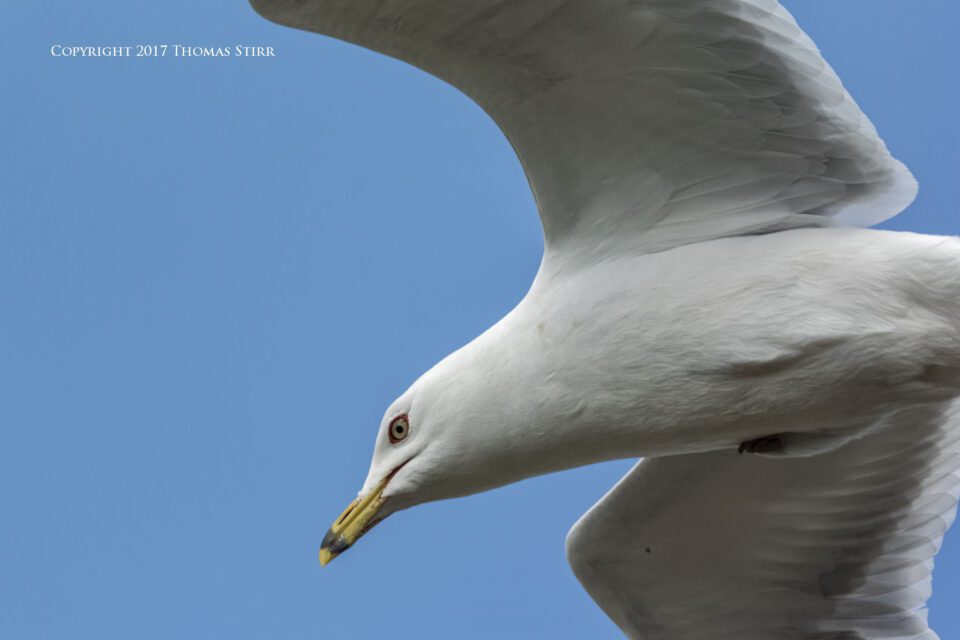
Working quickly with my camera is something that became ingrained in me decades ago, during my newspaper days, when I worked as an advertising sales representative. It’s something that I’ve continued doing with my client video/photo assignments, as well as with my personal photography.
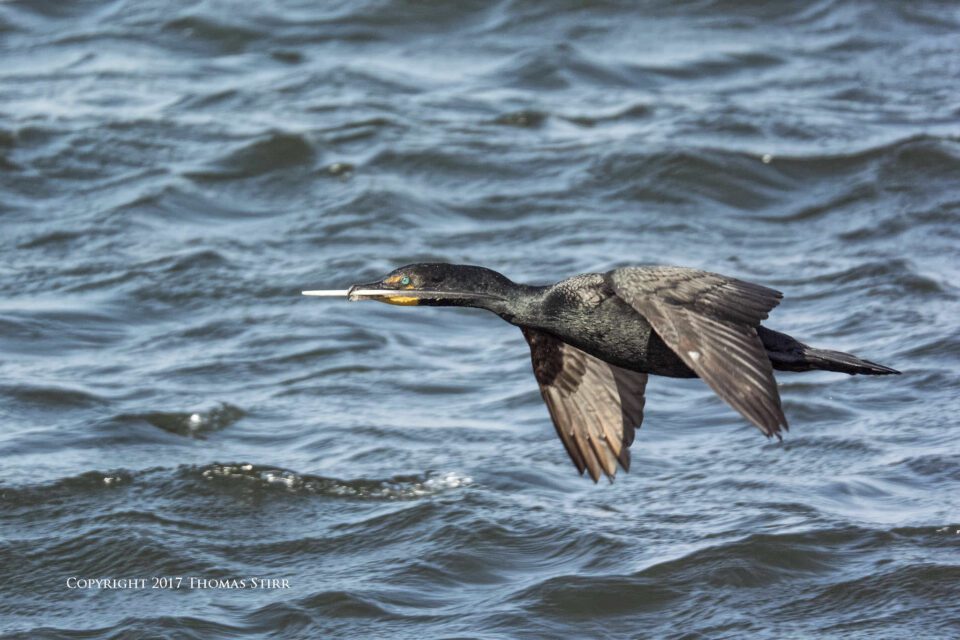
My objective when doing one of my ‘Find – Frame – Fire’ birds-in-flight exercises is to get the subject birds well framed in each image. Obviously due to the speed of the exercise I do have a number of missed shots. That is to be expected, and is not the least bit disappointing to me.
I typically use my Nikon 1 CX 70-300mm f/4.5-5.6 fully extended to 300mm (efov 810mm) for this exercise. When fully extended the CX 70-300mm has a minimum angle of view of 3-degrees which is almost identical to the Nikkor 800mm f/5.6 when shot with a full frame body. This adds to the challenge of the exercise. I will adjust the zoom focal length on my CX 70-300mm as needed to achieve desired framing.
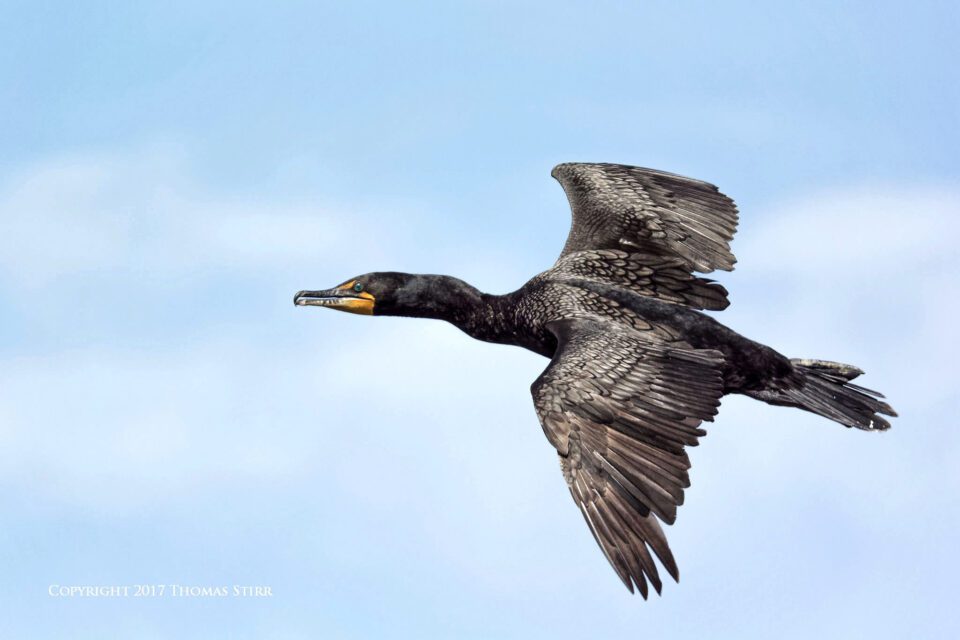
Using the Eastport Drive nesting areas adjacent to Hamilton harbor during strong winds works well for a couple of reasons. In terms of the gulls, the winds force the gulls to attempt to hover in mid-air as they try to negotiate landing by their nests. While the winds tend to impede the forward motion of the gulls, it creates the need for them to make quite rapid and sizeable vertical movements to get down to their nests. Panning with a subject making rapid vertical movements is not something that I get to practice very often, which makes the gulls ideal subjects.
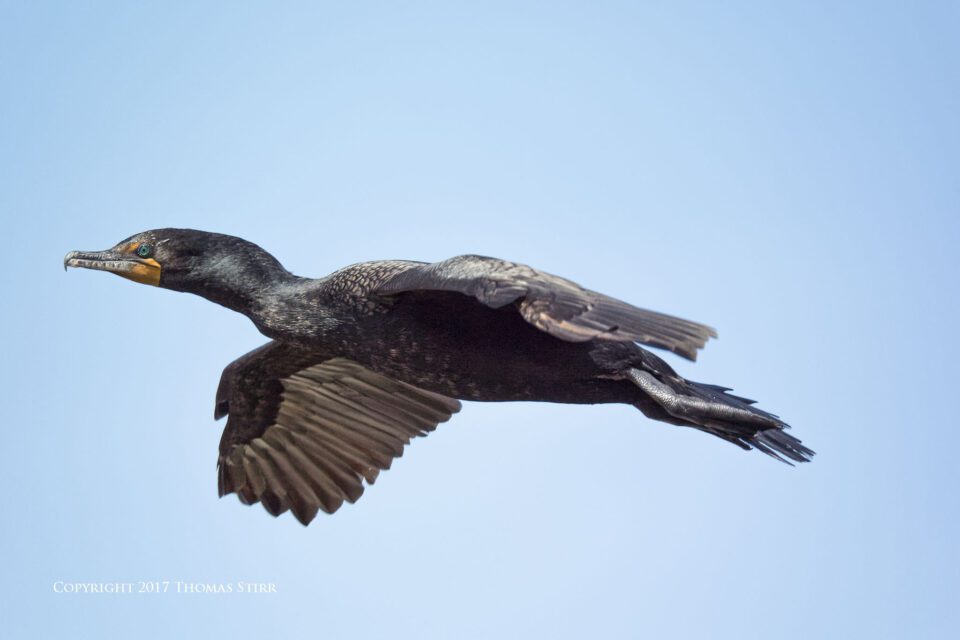
The strong winds also affects the flying behaviour of the cormorants. As they approach their nests from upwind, the winds make it impossible for them to land safely so they purposely overshoot their nests, then do a U-turn and fly back into the wind. When the wind is coming from the southwest (this is common when we get stormy weather) the cormorants will bank to the left and go further out over the harbour if they are nesting on the peninsula. These birds end up being too far away to make good subjects for my birds-in-flight exercise.
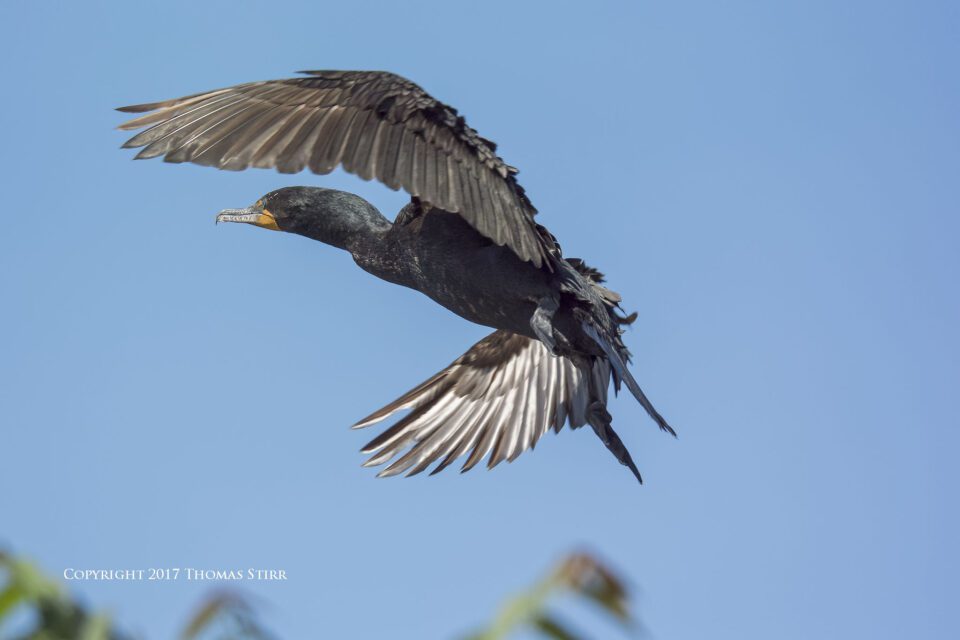
Birds that are nesting in the trees that are adjacent to Eastport Drive will bank to the right when they do their U-turn. They will then fly much closer into the shoreline, using the trees as a windbreak as they fly back towards their nests. This brings them much closer to shore than usual, making them ideal birds-in-flight practice subjects.
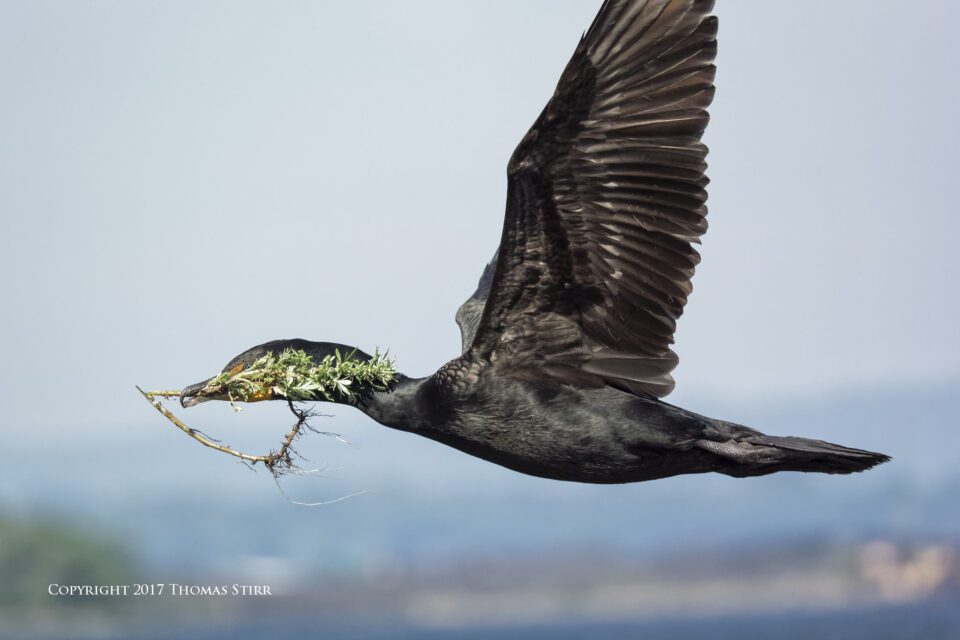
During the morning practice exercise I often I had three to seven birds approaching at the same time, using this close-to-shore flight path. Depending on the configuration of the approaching flight group I needed to quickly decide if I was going to take a series of single shots of the same bird as it approached, or photograph individual birds, picking them off one by one.
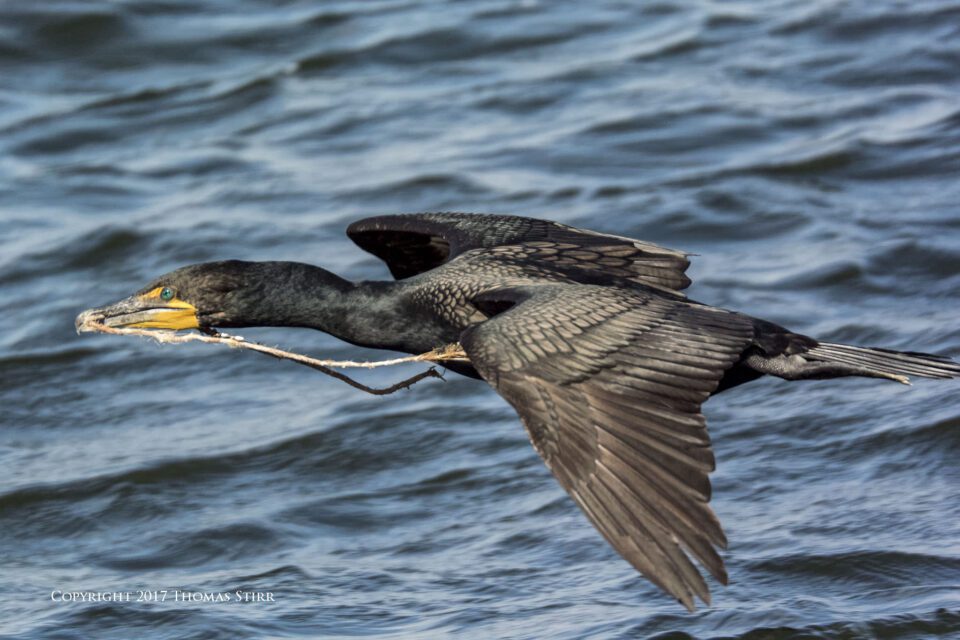
I would normally begin shooting when an individual cormorant filled about 35% to 40% of the width of the frame. My ultimate goal was to get the framing of the individual birds so tight that I could just get their length to fit inside the image frame as in the image above, and allow for a bit of breathing room at its beak and at its tail if possible. I also took a number of images where I purposely shot in very tight and had the image bleed off the edges of the photograph.
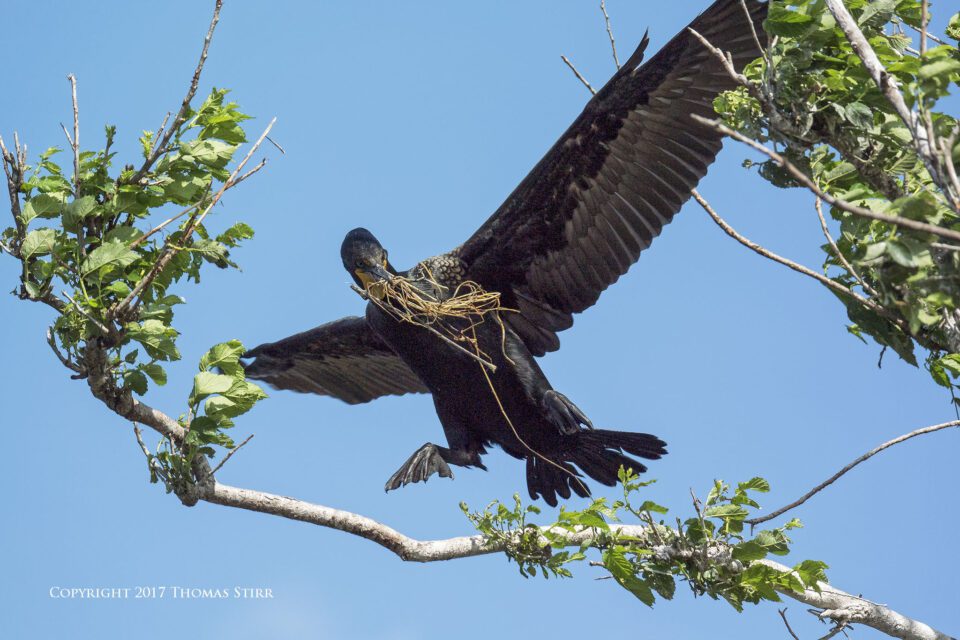
All of the photographs in this article are displayed 100% as captured without any cropping at all. All images were captured hand-held. I used Manual settings with my Nikon 1 V3, continuous auto-focus with subject tracking, and Auto ISO 160-3200. As is my standard practice when shooting at fast shutter speeds, VR was turned off.
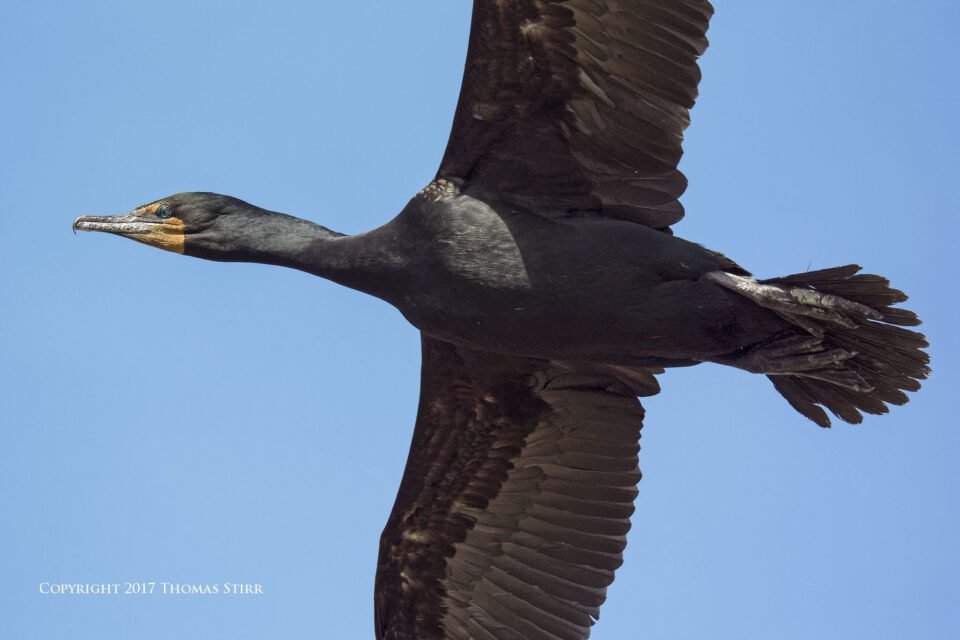
If you enjoy photographing birds-in-flight and would like to improve your skills with a fun and challenging exercise, trying my ‘Find – Frame -Fire’ approach may be an interesting experiment.
Technical Note:
All images in this article were produced from RAW files using my standard process of DxO OpticsPro 11, CS6 and the Nik Collection.
Article and all images are Copyright 2017 Thomas Stirr. All rights reserved. No use, duplication or reproduction of any kind including electronic or digital is allowed without written permission. Photography Life is the only approved user of this article. If you see it reproduced anywhere else it is an unauthorized and illegal use. Readers who call out offending websites that steal intellectual property by posting comments on those offending websites are always appreciated!